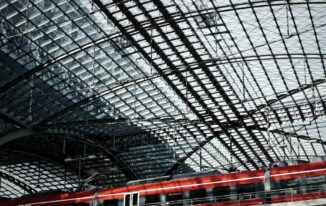Lighting plays a critical role in shaping the look and feel of any business space. From offices to retail stores, restaurants to showrooms, the right lighting can significantly enhance the aesthetic appeal and atmosphere of your business. Beyond its functional purpose, lighting helps set the tone for your space, making it more inviting, energizing, or relaxing, depending on your goals. By carefully selecting and positioning your lighting, you can create an environment that aligns with your brand, enhances customer experience, and even improves employee productivity. Here’s how to use lighting to elevate your business space’s aesthetic.

Choose Statement Lighting Fixtures
One of the most effective ways to instantly enhance your business space’s aesthetic is by incorporating statement lighting fixtures. These serve as focal points that not only provide illumination but also add an artistic or design element to the room. Statement lighting can transform a bland, functional space into something visually appealing and memorable.
Pendant lights, in particular, are an excellent choice for creating visual interest. Whether hung over a reception desk, dining tables, or retail displays, captivating pendant light designs can act as both functional and decorative elements. With a wide variety of styles, colors, and materials available, pendant lights can be customized to complement your brand’s identity. Opt for bold, geometric shapes for a modern, edgy feel, or choose softer, more organic designs for a relaxed, cozy atmosphere. The key is to select fixtures that reflect your business’s character and create a lasting impression on your visitors.
Layer Your Lighting for Depth and Dimension
A well-lit space is rarely dependent on a single light source. To create depth and dimension, it’s important to layer your lighting by using a combination of ambient, task, and accent lighting. Each layer serves a distinct purpose and, when combined, ensures that your space is both functional and aesthetically pleasing.
Ambient lighting provides general illumination, typically achieved with overhead lights or recessed fixtures. This ensures the space is well-lit without overwhelming brightness. Task lighting, such as desk lamps or under-cabinet lights, is used for specific tasks like reading or working. Finally, accent lighting adds drama and highlights architectural features or decor elements, such as artwork, plants, or textured walls.
By layering these different types of lighting, you create a more dynamic space that draws attention to key areas and enhances the overall aesthetic. This approach also allows for greater flexibility, as you can adjust the lighting to suit different moods or activities throughout the day.
Utilize Natural Light
Incorporating natural light into your business space can have a profound effect on both the ambiance and energy efficiency of the environment. Natural light makes spaces feel more open, inviting, and warm, which can improve customer satisfaction and employee morale. Daylight reduces the need for artificial lighting during daytime hours, cutting down on energy costs.
Maximize natural light by ensuring that windows are unobstructed by heavy drapes or furniture. In spaces where direct sunlight might be too harsh, use sheer curtains or blinds to diffuse the light, creating a soft, pleasant glow. If your business space lacks sufficient windows, consider installing skylights or light tubes, which bring in natural light from above.
Natural light not only improves the aesthetic of your space but can also enhance productivity. Studies have shown that exposure to natural light boosts mood, energy, and overall well-being, making it an excellent addition to any workplace environment.
Highlight Architectural Features with Accent Lighting
Accent lighting is a powerful tool for highlighting the architectural features of your space. By strategically placing lights around elements such as exposed brick walls, columns, or staircases, you can emphasize these features and add a sense of sophistication to the overall design. Accent lighting can be used to create focal points, drawing the eye to specific areas and making the space more visually engaging.
Track lighting, wall sconces, and uplighting are popular choices for accentuating architectural details. For example, if your space has high ceilings or unique textures, using uplighting to cast a soft glow upward can enhance the room’s height and grandeur. Similarly, placing track lighting along a feature wall can highlight the texture of the materials and add visual depth.
Customize Lighting for Different Zones
Your business space likely serves multiple purposes, and each zone may require different lighting conditions. Customizing your lighting based on the function of each area can greatly improve the overall flow and atmosphere of the space. For example, in a retail store, brighter lighting may be needed in display areas to highlight products, while softer lighting could be used in fitting rooms to create a more comfortable, relaxed environment.
In restaurants or cafes, mood lighting plays an important role in creating the right ambiance. Softer, dimmable lights work well for dining areas, offering a more intimate feel, while brighter lights are necessary for the kitchen and service areas. Tailoring the lighting to each zone ensures that each area is both functional and aligned with the aesthetic you want to convey.

Using lighting strategically can transform your business space from ordinary to extraordinary. Whether you’re enhancing the architecture, making a bold statement with pendant lights, or maximizing natural light, the right lighting choices can elevate the ambiance and improve both customer and employee experiences. By combining functionality with aesthetic appeal, lighting becomes an essential part of your business’s design strategy.



